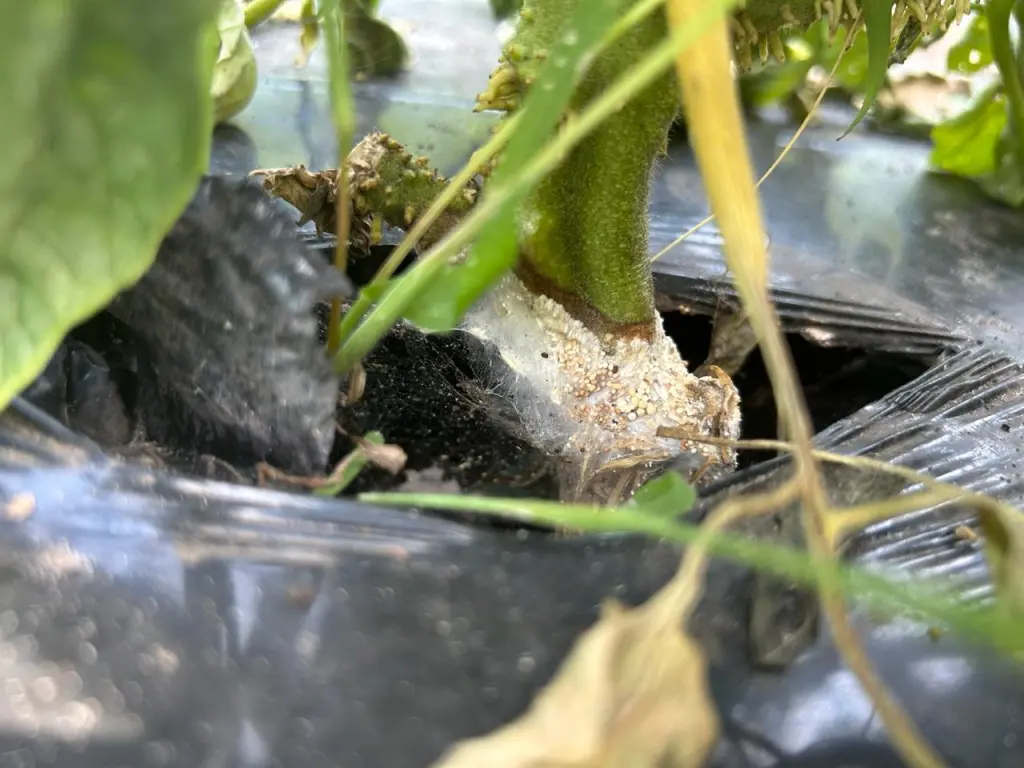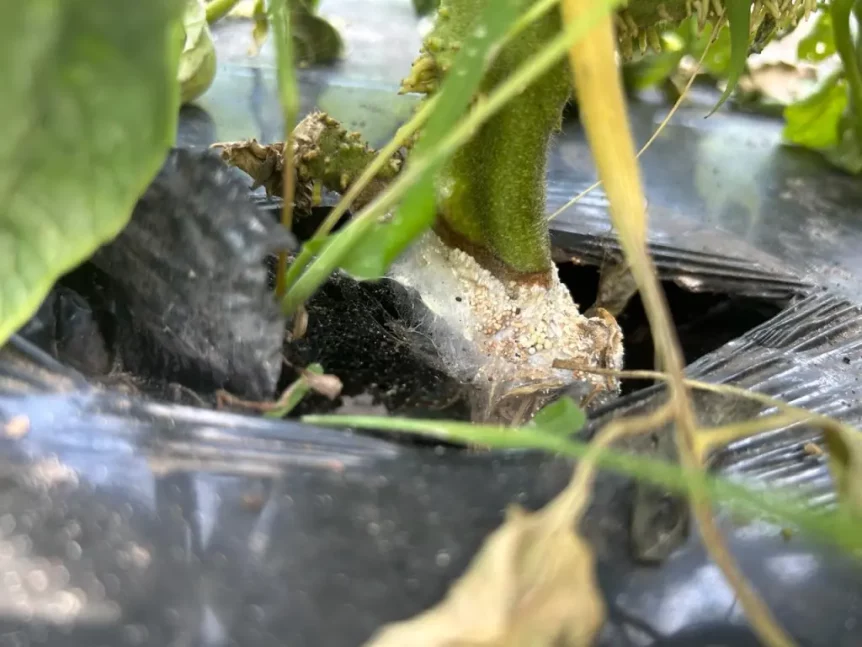
Weekly Field Update
Clemson Extension agents provide updates in The South Carolina Grower this week about the status of various crops being produced throughout the state.
Statewide
Tom Bilbo, Extension Entomologist
Pickleworms have arrived in Charleston already. Keep a look out to protect your cucurbits, especially your cucumbers and summer squash, which they prefer. But they can also be damaging in melons, pumpkins and others. Pest pressure from this pest complex will only increase from here until the first frost, and it only takes one worm to ruin a fruit. Scout male flower buds to determine when they have arrived on your farm. When pest pressure is low you can use selective Bt sprays, but later in the season, you will want a product with longer residual, such as Coragen, Exirel or Radiant/Entrust. If whiteflies are a common issue on your farm later in the summer, then Exirel or Coragen will also be effective against that pest. Refer back to this post for more info on pickleworms.
Coastal Region
Anna Sara Hill
- Strawberry season is over, and there are a few more weeks of blueberry and peach season. Blackberries are rapidly ripening, and we are a couple of weeks out from the start of watermelon season. Growers in this area anticipate their first picking of blackberries at the end of this week.
- Recent rain events in some areas have increased disease pressure of watermelons. Currently, gummy stem blight and downy mildew are both causes for concern. Continue to look out for spider mites, as isolated populations are being observed in different areas. It is also the time of year for squash bugs to cause problems. I have only seen a few scattered around and have not seen any large infestations yet. Continue scouting vigilantly and keep up with the cover sprays. If you see a problem, treat early to get it under control.
- An excess of fertilizer, or lack thereof, has caused problems in some fields. If fertilizer toxicity or deficiency is suspected, get a plant tissue sample analysis, which can confirm the nutrient levels in the plant. Adjustments can be made accordingly. If an excessive amount of fertilizer has been applied, adding extra water cycles can help leach it out of the soil, and trigger the plant to grow in cases where plants are stunted and burned.
Zack Snipes
- Things are wide open in the Lowcountry. We have an abundance of summer squash coming in, and our first few grape and cherry tomatoes are starting to turn.
- I have found more virus than normal in squash so far this year. The most common virus in the spring on squash is watermelon mosaic virus.
- Bell pepper are coming to harvest, and the specialty varieties aren’t far behind.
- I am seeing an increase in bacterial wilt as well as Southern Blight in tomato which is not surprising for this time of year. Bacterial spot incidence and severity are lower than normal this year on tomato.
Midlands
Phillip Carnley
- Tomatoes are growing well around my area, but there is a rather alarming rate of Southern stem blight causing plant decline. In isolated areas, I have also seen bacterial speck, usually caused by irrigation over the top of the crop or prolonged dew on foliage in shady spots along field margins.
- Watermelons are growing nicely, and the first fruits are sizing well. A few issues are showing themselves, mainly spider mites, in and around the crowns of plants; scattered gummy stem blight and some anthracnose.
- Peaches are coming in with good quality. There is some split pit being seen. Brown rot is on the rise, so make sure that you are timely on your fungicide applications.
- Blackberry is coming in with excellent quality. I’m still seeing leaf and cane rust and some anthracnose affecting older canes. Spotted wing drosophila hasn’t been an issue yet, but expect that to change as the season get hotter and fruit becomes overripe or wet.
- Squash are being harvested constantly with good yields. There have been some issues of plants snapping in a few fields. The original culprit, squash vine borer, was not present, and the damage was determined to be caused by high winds.
- Cowpeas are cracking right along with few or no issues. Some early damping off was observed in wetter areas but not throughout fields. The oldest plantings are coming into flower. Now is the critical time for monitoring cowpea curculio. In Calhoun County, I have a variety comparison being grown to look at 13 different varieties and will be planning a field day. Stay tuned for more information.
Sarah Scott
- It’s been dry, for the most part, along the Ridge, and we are even seeing some wilting in young peach orchards that do not have irrigation yet. We had spotty thunderstorms and rain over the weekend that brought some hail to areas but very little rainfall.
- The peach crop is heavy right now. Some varieties have split pits due to cold damage back in March. We thought we made it through those events okay, but as fruit is coming to harvest, we are finding much more split pits than anticipated. Although the cold damage does not really cause damage to the taste of the fruit, a split pit/dead seed can cause the shelf life of the fruit to drastically decrease. Hopefully, we will see much less of this damage as we get deeper into the season.
- Thrips are a big concern now. We had early damage which showed up as callusing on fruit and even cracking in some cases. Now that fruit is coloring up and sizing, the damage shows up as “silvering” of the skin. Although the damage does not generally go deeper than the skin, it is an aesthetic issue, and if severe enough can also cause fruit to not hold up as well, post-harvest. Severe feeding can also cause issues with leaves curling. Thrips usually die down around June, however, we are seeing lots of activity in fields now. Dr. Brett Blaauw posted some great information on the UGA Peach Blog regarding the insect’s habit, cycle and treatment options.
Pee Dee
Christiana Huss
- Yellow summer squash is being harvested and looking delicious! Squash bug eggs have been spotted here and there but not in high numbers yet. Look for bronze-colored eggs on the undersides of squash leaves when scouting for this pest.
- I’ve found suspected downy mildew on collards causing yellow leaves. The abundant rain has likely caused this issue.
- Onions and some potatoes are getting harvested. And pepper plants are looking perfect so far.
Brittney King
- Strawberry production is slowing down quickly in the Pee Dee, and some growers have already ripped up irrigation lines. Growers have struggled with overripe and water-soaked berries the past couple of weeks, which increased sap beetle populations.
- I’m seeing gummy stem blight in watermelon fields, most likely due to the hot and humid weather lately. Remember that gummy stem blight has been shown to have decreased sensitivity to Tebuconazole, so do not rely on it alone. Miravis Prime and Inspire Super have been shown to perform well when rotated with mancozeb (Manzate Max). For more information on fungicide resistance to gummy stem blight in watermelon, visit the SCGrower blog post written by Dr. Tony Keinath, Extension Vegetable Pathologist. Also, check out the 2024 Watermelon Spray Guide from the 2024 Vegetable Crop Handbook on page 215.
- Unfortunately, I continue to see tomato plants collapse in the heat from bacterial wilt. Remember that the only two preventative things to do are to use grafted plants or not grow tomatoes. This can also occur on other solanaceous crops, but I’ve only occasionally seen it on pepper this year.
- Broccoli, cabbage and collards are being harvested in good volumes.
- Some growers started harvesting blackberries over the weekend. U-pick operations will be opening in the next week or so.
- U-pick cut flower operations are doing great, with some mild disease pressure from powdery mildew.
Upstate
Andy Rollins
- The peach crop is doing well. We are picking Flavorich still and have started into Carored on some farms. Slight issues with sizing are being reported. We’re still investigating the cause, as seeds and pits remain intact. Specialists are looking into potential causes.
- Strawberries are finishing up for some, but some are continuing to pick. Quality and taste is good, but even Camarosa is having trouble keeping up its firmness with the rain and heat. Still fighting to keep anthracnose out of some fields, as rain has made things very difficult this year. We are currently over 30 inches for the year on many Upstate farms.
- A tomato problem that has caused major damage in the Upstate is Rhizobium rhizogenes (formerly Agrobacterium). It was diagnosed on a major farm in the Upstate last week. It is believed to have come in on plants from a Florida nursery where it is referred to as “crazy root”. Plants from multiple varieties and various ages are showing the same symptoms of excess root generation at the base and up each stem. Younger plant symptoms are much reduced. The problem is randomly distributed over 50 acres in about 20% of plants. We have been directed by Dr. Tony Keinath to carefully remove plants from field with gloves and plastic bags, being careful to not spread any further. There are currently no recommended treatments. Excessive rains and temperatures are thought to have caused this imported disease to grow and proliferate on this farm. Transplants do not exhibit symptoms until after being planted. Examine transplants very closely for any problems before planting to try and avoid this.










